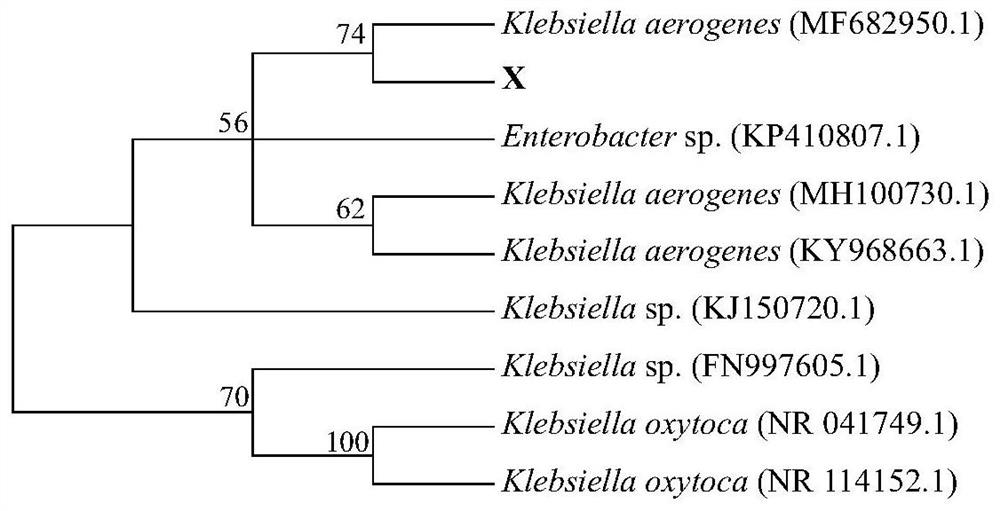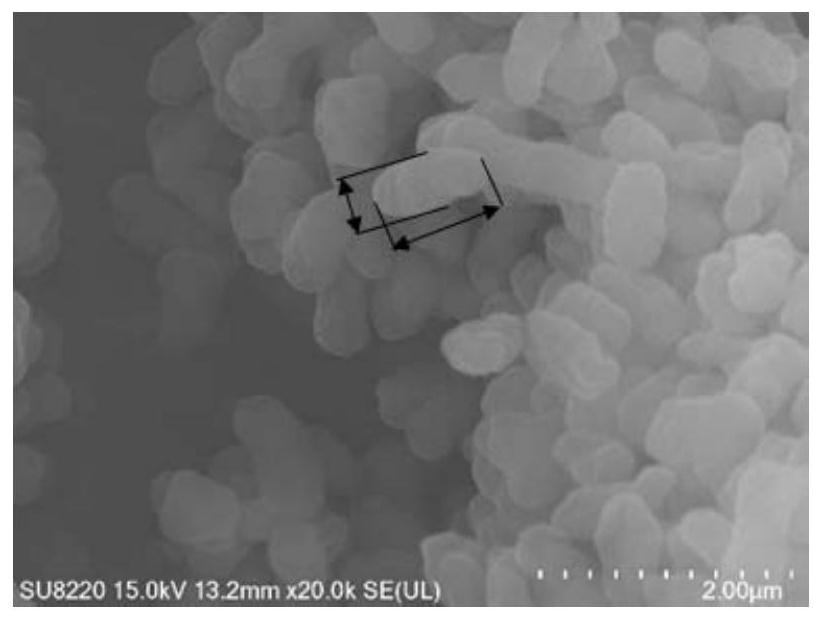An Antimony Oxidizing Bacteria with High Resistance and High Oxidation Ability and Its Application
A technology for oxidizing bacteria and trivalent antimony, which is applied in the direction of bacteria, chemical instruments and methods, and the restoration of contaminated soil, can solve the problems of lack of Sb oxidation function microorganisms and low oxidation efficiency, so as to reduce the risk of ecological environment, Good application prospect, low cost effect
- Summary
- Abstract
- Description
- Claims
- Application Information
AI Technical Summary
Problems solved by technology
Method used
Image
Examples
Embodiment 1
[0028] Embodiment 1: Isolation and purification of Sb(III) oxidizing bacteria
[0029] (1) Enrichment: In order to obtain strains with Sb tolerance and oxidation function from the environment, farmland soil that had been heavily polluted by Sb for a long time was collected. Prepare 100ml of LB liquid medium (10g / L peptone, 10g / L NaCl, 5g / L yeast) in a 250ml Erlenmeyer flask, after the medium is sterilized, cool and add sterile Sb(III) solution to make the medium The concentration of Sb(III) in the medium was kept at 5mM (ie 0.6g / L). Take 1 g of fresh soil sample and add it to the above-mentioned medium, and cultivate it on a constant temperature air bath shaker at 30° C. with a rotation speed of 150 rpm for 48 hours. Every 24 hours, 5 mL of the aforementioned enriched culture solution was transferred into sterilized liquid LB medium with the same antimony concentration, and repeated three times.
[0030] (2) Plate separation: Take 1 mL of the third enrichment culture solutio...
Embodiment 2
[0037] Example 2: Growth characteristics of Klebsiella aerogenes X
[0038] Preparation of strain seed liquid: Inoculate the strain in LB liquid medium and cultivate for 12 hours, centrifuge at 8000r / min for 10 minutes, collect the bacteria, wash twice with 0.8% NaCl solution and resuspend, resuspend and adjust OD=1.0, Conduct the following research.
[0039] (1) The influence of temperature on bacterial strain growth: by the inoculum of 1% (v / v), inoculate seed solution in the Erlenmeyer flask that 100ml LB culture medium (regulating pH 7.2) is housed, under different temperature (25 ℃, 30°C, 35°C), cultured on a shaker at 150r / min, samples were taken at different time points to measure the Optical Density 600 (OD600) of the solution, and each treatment was repeated 3 times. The growth curves of Klebsiella aerogenes X at different temperatures are shown in Figure 4 . It can be seen from the figure that the growth rate of the strain in the logarithmic phase increases with ...
Embodiment 3
[0044] Example 3: Properties of Klebsiella aerogenes X oxidation of Sb(III)
[0045] In order to understand the oxidative characteristics of the strains under the stress of different Sb(III) concentrations, the seed solution (1%) was inoculated at 1.21mg / L (0.01mM), 6.09mg / L (0.05mM) and 12.18mg / L (0.1mM) In the LB liquid medium with Sb(III) concentration, samples were taken at different time points, the concentration of Sb(III) in the solution and the change of cell concentration (OD600) were measured, and the oxidation rate was calculated. The calculating formula of oxidation rate is the same as embodiment 1 (3).
[0046] The oxidation of Sb(III) in aqueous solution and the change of cell concentration by Klebsiella aerogenes X at different culture time are shown in Figure 8 . During the sampling time, with the prolongation of time, the oxidation rate gradually increased, of which 6.09mg / L+Klebsiella aerogenes X( Figure 8 B) The oxidation rate of Sb(III) can reach more ...
PUM
 Login to View More
Login to View More Abstract
Description
Claims
Application Information
 Login to View More
Login to View More - R&D
- Intellectual Property
- Life Sciences
- Materials
- Tech Scout
- Unparalleled Data Quality
- Higher Quality Content
- 60% Fewer Hallucinations
Browse by: Latest US Patents, China's latest patents, Technical Efficacy Thesaurus, Application Domain, Technology Topic, Popular Technical Reports.
© 2025 PatSnap. All rights reserved.Legal|Privacy policy|Modern Slavery Act Transparency Statement|Sitemap|About US| Contact US: help@patsnap.com



